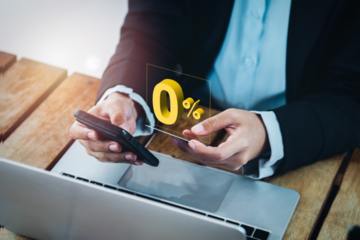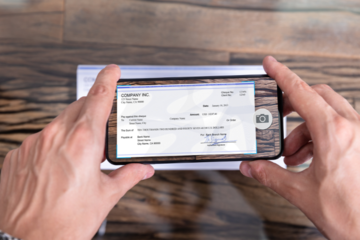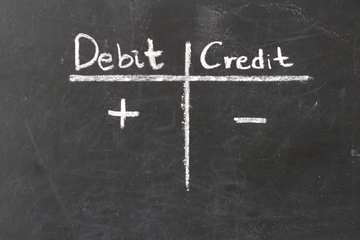Some expenses are hard to predict. Whether it’s a car breakdown or an unexpected illness, some things can’t be scheduled and planned into the budget.
Yet, just because you can’t plan for them doesn’t mean you can’t be prepared. An emergency fund ensures that you’re ready when these unpredictable events happen. When you have surplus funds available, you can rest assured that an emergency won’t unsettle your financial stability.
There’s a big difference between knowing you need an emergency fund and building one, though. Let’s look at what these funds are, how to build them, and when to use them.
What Is an Emergency Fund?
An emergency fund is an accessible account that holds enough cash reserves to cover unexpected expenses. We’ll get to how much emergency cash you need in a moment. What's important to note here is that these cash reserves should provide a safety net that keeps you out of financial trouble when an emergency strikes.
Do I Really Need an Emergency Fund?
According to recent research from the Federal Reserve, 68% of American adults have enough extra cash to cover an unexpected $400 expense. That’s an improvement over the 50% who said that in 2013, but it still leaves nearly a third of U.S. adults without enough margin to cover even a minor emergency.
Unpredictable events will happen. And many of them cost far more than $400. Car troubles or major home repairs can add up to hundreds or thousands of dollars. Losing a job could mean you have no income for weeks or months. Major medical procedures may cost thousands out of pocket, even with insurance coverage. If you don’t have an emergency fund to cover these expenses, you’ll have to turn to options that make matters worse.
Data from the Consumer Financial Protection Bureau demonstrates this clearly. People without emergency funds are much more likely to overdraft their checking accounts, leave credit cards and other bills unpaid, and withdraw money from their retirement accounts prematurely. Yet, those with even one month of emergency cash on hand can handle many unpredictable expenses without resorting to these measures.
In short, having an emergency fund helps you stay financially stable even in challenging circumstances.
How Much Should Be in My Emergency Fund?
There’s no definitive amount to keep in your emergency fund. Your target number depends on your specific circumstances, including your monthly income, general financial stability, dependents, and more.
Most financial experts recommend having around three to six months’ worth of expenses in your emergency fund. In other words, if you normally spend $5,000 per month, you should have $15,000 to $30,000 available. This is a good general rule of thumb, but you can set your own target by looking at your financial situation.
For example, if you have a secure job with no dependents and don’t own your own home, you might be able to get by with only one or two months’ worth of expenses. On the other hand, if you have three children, a mortgage, and a fluctuating income, you may want more than six months of cash on hand.
How To Build Up Your Emergency Fund
It takes commitment and planning to achieve any savings goal. You won’t get from zero to three months’ worth of cash overnight, so you’ll need to map out your journey. Here’s a simple roadmap to get you started:
Set manageable goals. While it’s important to set an ultimate goal for your emergency fund, you can take the pressure off by breaking that into small, attainable chunks. If your ultimate goal is to save six months of salary, start with two weeks and go from there.
Start small and build. If you’re not used to saving money, it’s going to take some adjustments. Instead of planning to save $500 a month, try reworking your budget to start with $25 a week. Once you get comfortable with that, build on it.
Automate your contributions. Take the effort out of saving by making it automatic. Most savings accounts allow you to create an automatic savings plan so you can set it and forget it. That way, the cash lands in your emergency fund before you have a chance to spend it.
Track your progress and celebrate milestones. As your account begins to grow, keep tabs on it. Celebrate each milestone (perhaps with a treat or another reward you’d set aside) and set new ones as you go.
When Should I Actually Use My Emergency Fund?
Once you have a nice cushion of cash reserves on hand, it’s important to remember one more thing: That money is only for emergencies. It’s not for your spontaneous trip to Disney or that big kitchen remodel. When you’re trying to decide whether to tap your emergency cash for an expense, keep three criteria in mind from the experts at Equifax. The expense should be unexpected, necessary, and urgent. If it doesn’t fit all three, it’s something to save for separately.
Frequently Asked Questions
Is a Rainy Day Fund the Same as an Emergency Fund?
A rainy day fund is similar to an emergency fund, but it’s designed for much smaller expenses. Use a rainy day fund to save for small but urgent car repairs, minor appliance breakdowns, and similar issues. An emergency fund is for major events such as the loss of a job, a medical setback, or significant home repairs.
What Is the Difference Between an Emergency Fund and a Savings Account?
A savings account is simply a tool for saving money. You can use it for anything from saving for a vacation to stowing away cash for emergencies. You should keep your emergency fund in its own dedicated savings account or similar vessel, not mixed with funds for other purposes.
Where Should I Keep My Emergency Fund?
When you’re looking for a place to store your emergency cash, make sure the account balances accessibility with earning interest. You may need to withdraw this money fast, so don’t put it in an account that charges penalties for early withdrawals or takes weeks to release funds. However, a checking account is so accessible that your money will earn little or no interest. Consider high-yield savings accounts, money market accounts, and some certificates of deposit for a good mix of accessibility and returns.



